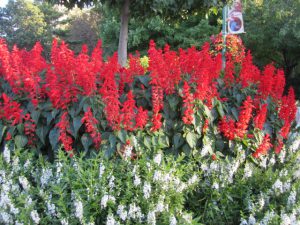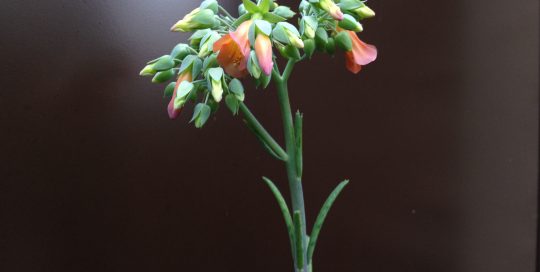Deadheading Annual Flowers
Views: 18318

Fourteen years ago, during an interview for my first landscaping job, my soon-to-be boss asked me if I knew what deadheading was.
I giggled and said I knew what a Deadhead was, but had never heard it used as a verb before. Luckily, my soon-to-be boss was an old hippie, so she thought this was funny and hired me anyways. And that’s where it all began.
Deadheading means removing old, spent flowers from a plant to remove seed pods, improve its appearance, and encourage new blooms. This blog post will cover the basic concepts of deadheading and highlight how to deadhead a few commonly sold annual flowering plants.
Basics of Deadheading
Most annuals have tender stems. They can be deadheaded by pinching off the old blooms with your fingers, small pruners, or scissors.
To figure out how far back to cut a stem, examine the rest of the plant to see where blooms form. Do they perch atop a stem from the base of the plant? Do they emerge from a bud just above or below an older bloom? Or maybe new blooms appear on a stem that branches off from the base of the older bloom, forming a crotch. Understanding where new blooms form is crucial before you deadhead, or else you may end up removing flower buds.
Once you’ve determined where new blooms emerge, remove the old bloom so that the new bloom is unaffected. This may mean removing a whole stem, part of a stem, or just the tip. If unsure, it’s best to just remove the spent flower, including the seed pod(s), and leave the stem intact. It’s also generally a safe bet to cut right above the first set of leaves below the spent bloom.
Flowering annuals may or may not need deadheading, depending on the variety. For example, most of the newer varieties of Lantana and Verbena are sterile and won’t put energy into seed development. But if you grow an old-fashioned variety, plants will still benefit from the removal of spent flowers. Angelonia, one of my favorite annuals, doesn’t require deadheading, but I think it helps to remove spent branches of flowers.
Easiest Annuals to Deadhead
Geraniums are one of my favorite annuals to deadhead because each bloom grows on its own stem, which makes it easy to snap them off the main stem with a gentle twist of the fingers.
Marigolds are another favorite to deadhead, because their spent blooms pull off easily with a delightful pop.
Gerbera Daisy blooms each grow on their own stem, which can simply be cut at the base to remove spent blooms.
Salvia’s spiky blooms are easy to remove and should be cut back to the first set of leaves or to the crotch where the next blooms have formed
Deadheading Dahlias can be a little tricky because their buds look similar to their seed pods, but the seed pods are more pointed while the buds are flatter and rounder. Remove the seed pod and stem down at the point where it meets the main stem.
Pinching Petunias
Some annuals, like Petunias, require more pinching than deadheading.
Petunias deserve an entire blog post on their own, but I will touch on the basics. Most newer varieties of petunias don’t require deadheading (like Wave, Tidal Wave, and Supertunias), but all of them will perform better if regularly cut back. This is hard for most people, because it requires removing flowers from the plant. But without pinching, Petunias will turn into a leggy mess by mid-summer.
Every week or two, especially once stems have reached six to eight inches long, choose a long stem and cut it back at least half to promote more blooms and bushier growth. For older Petunia varieties, deadheading by pinching off spent blooms and seed heads is recommended. Or you can be like me and stay away from Petunias altogether by using Calibrachoa (Million Bells) in their place.
Self-cleaning Flowers
Then there are plants that don’t require deadheading at all, also known as self-cleaning flowers. Spent flowers will either fall off the plant on their own, or new blooms cover the old blooms. The most common self-cleaning flowers are Impatiens, Begonias, Calibrachoa (Million Bells), and Vinca. Some other common annual flowers that don’t need deadheading include Euphorbia, Mecardonia, Bacopa, Scaevola, Portulaca.
Meet Abbi Hayes
Abbi's Recent Posts

Kalanchoe delagoensis: Mother of Millions







